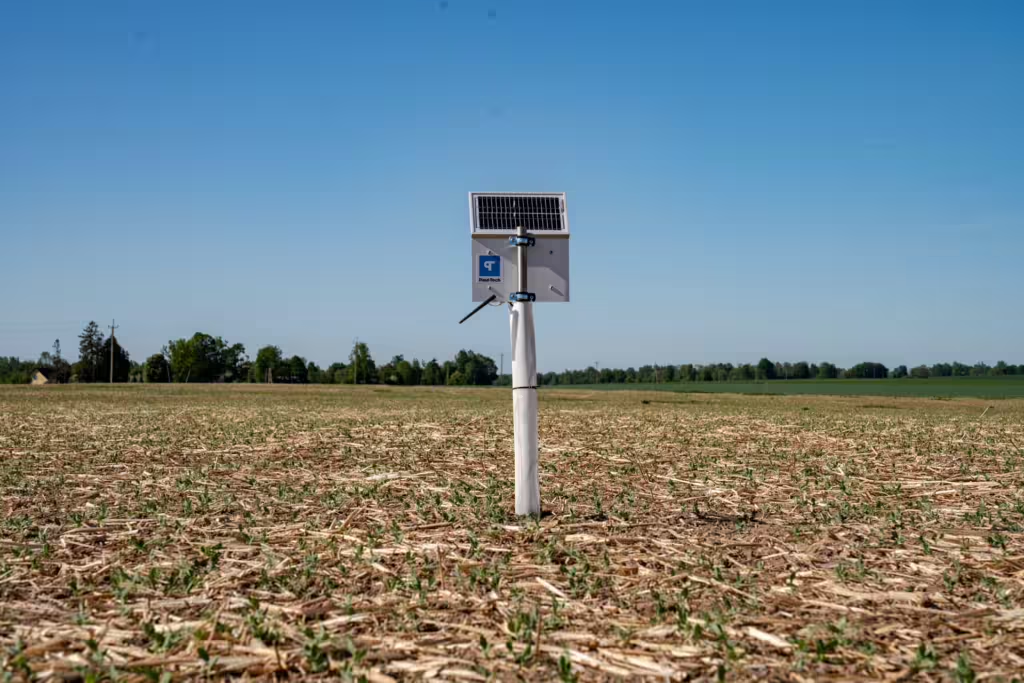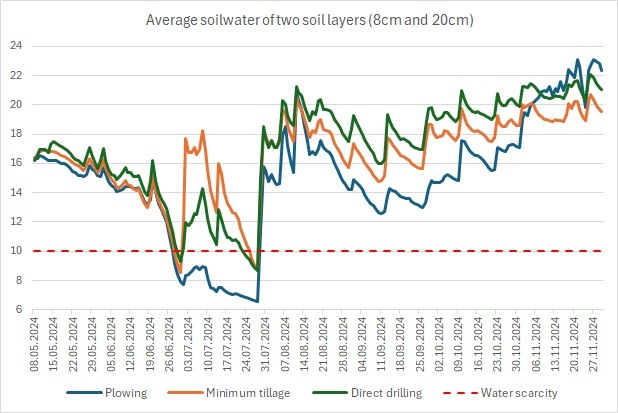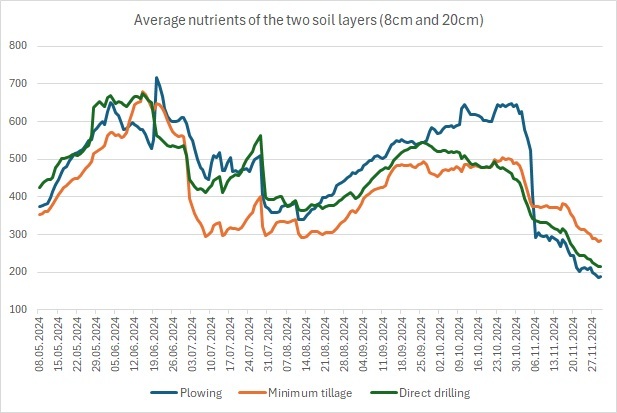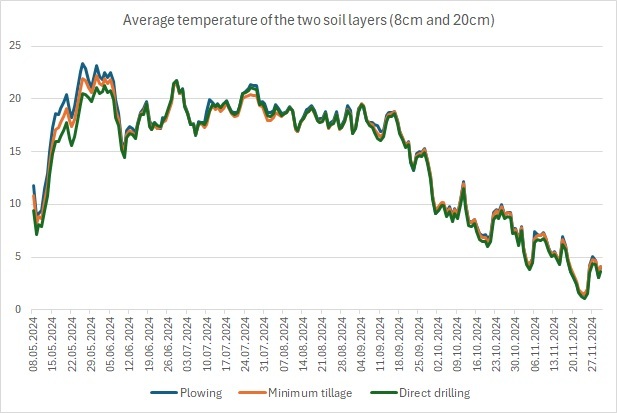
Paul-Tech’s soil stations monitored the impact of different cultivation methods on the plant growing environment in a trial organised by eAgronom. Field peas were in the crop rotation in 2024, preceded by a diverse cover crop. Three different cultivation methods were compared: plough-based, minimised tillage and direct drilling. Ploughing was carried out on 25 April, minimised tillage was carried out with a disc harrow on 4 May, and sowing for all variants took place on 6 May, which was immediately followed by rolling.
Soil stations were placed in the fields after the crop was sown. The sensors of the stations were located at depths of 8 and 20 cm in the soil in all variants to monitor daily soilwater and nutrient levels and movement in the soil. In addition, the sensors also recorded soil temperature. The data measured from the soil are presented as daily averages for two layers.
Soilwater
The 2024 sowing period had a larger reserve of soilwater left over from the winter compared to previous years. As the days warmed up and due to low rainfall, there was a steady decline in soilwater (Figure 1), which gained momentum on 20 June and lasted until the end of the same month. July rains raised the soilwater level highest in the minimised tillage variant, followed by the direct drilling variant. July rains had the least impact on soilwater in the ploughing variant. In the ploughing variant, soilwater was lower throughout the season than in the other variants, which indicates the lowest water retention capacity.

The largest amount of soilwater during the vegetation period was in the direct drilling variant, closely followed by the minimised tillage variant.
Days with water deficit occurred during the pea growing season in the ploughing variant 31 (28/06…28/07), in the minimised tillage variant 6 (28/06…30/06 and 26/07…28/07) and in direct drilling 8 (29/06…30/06 and 23/07…28/07).
The rainfall that started in the last days of July considerably raised the soilwater level in all variants, but still left the ploughing readings lower. Subsequent rains kept the soilwater level consistently high until winter set in.
In the ploughing variant, the amount of soilwater only rose higher compared to the other variants after the autumn ploughing done at the beginning of November, when the ploughed layer filled with more water than the other variants. This may be due to the formation of a plough pan under the ploughing.
Nutrients
The fertilisation background was the same for all variants. With sowing, mineral fertiliser MAP 12-52 – N 4.8 kg/ha and P 9.15 kg/ha was applied. On 16 May, Potassium chloride – K 32.37 kg/ha was added as top dressing. Nutrients were also provided to the soil by the cover crop and field peas, which also resulted in an increase in nutrients from August to the end of October (Figure 2). However, in November there was a decrease in nutrient levels due to leaching. Nutrients that appeared after the peas matured were wasted due to soil leaching.

In the second half of May and the first half of June, there were the most nutrients in direct drilling, which was based on a higher soilwater level. Overall, ploughing had the highest nutrient level. On the one hand, the water deficit period in July hindered nutrient uptake, on the other hand, biological processes took place faster in the aerated soil with ploughing in the second half of the summer and autumn. As a result, more nitrate nitrogen was released into the soil than with other tillage methods. In addition, the above-ground residues of the cover crop were turned into the soil with spring ploughing. After the autumn ploughing done at the beginning of November, nutrients were quickly washed out of the ploughed layer by the rain.
The nutrient level was lowest in the minimised tillage variant. But by the end of November, fewer nutrients had been leached from there than in the other variants.
Soil Temperature
In spring, the soil warmed up fastest in the ploughing variant (Figure 3). Soil temperatures were also higher there until the vegetation shaded the soil surface. Ploughing was most exposed to heat stress during the heatwave in late May and early June. The lowest soil temperature in spring was in direct drilling. In direct drilling, the average daily soil temperature of the two soil layers was up to 3 degrees lower than ploughing on the hottest days, so the risk of soil heat stress was significantly lower. Soil with minimised tillage fell in between the others. Soil temperatures evened out when the vegetation shaded the soil surface. There were no clear differences in soil temperatures in the autumn.

Summary
Water retention capacity was lowest with ploughing, but highest with direct drilling. There were significantly more days with water deficit with ploughing than with minimised tillage or direct drilling.
During periods of rainfall, biological processes were faster in the aerated soil with ploughing, and more nitrate nitrogen was released into the soil compared to the other variants. A large amount of nitrogen that appeared in the soil after the peas matured leached out in late autumn.
Ploughing warmed up fastest in spring but was most susceptible to soil heat stress. Soil with direct drilling was most protected from the heat, but the soil warmed up more slowly in spring than with other cultivation methods. Reducing soil temperature by using direct drilling is beneficial for enhancing root growth and water and nutrient uptake during heatwave periods.